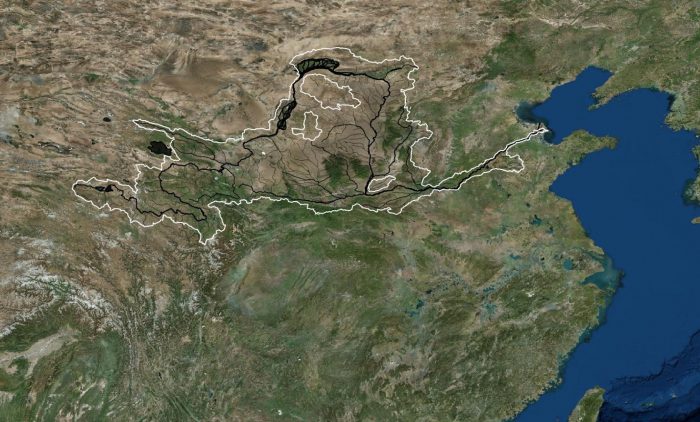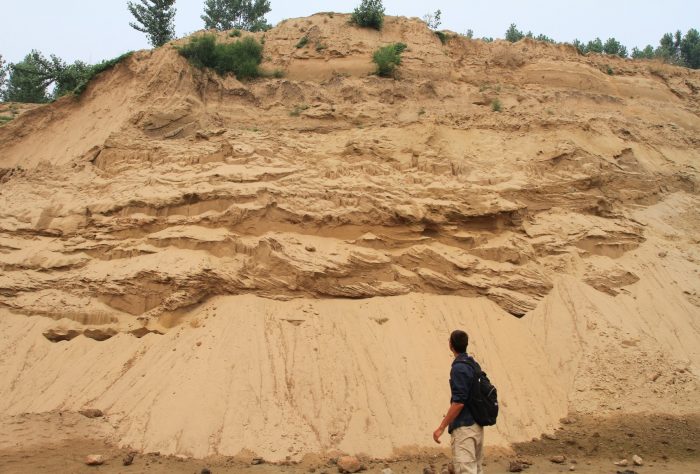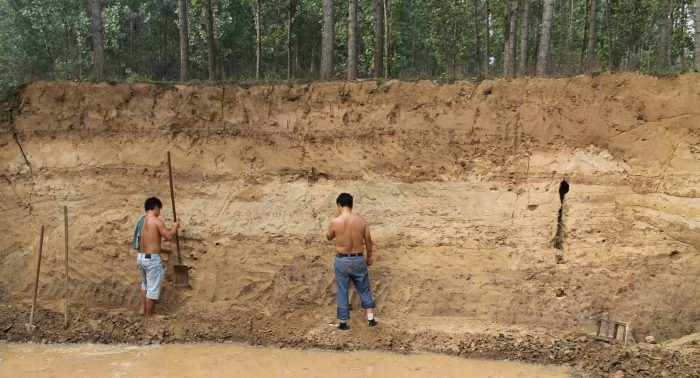
China is an epicenter for some of the world’s most devastating natural disasters. Among them, Yellow River flooding affects one of the largest areas and historically has one of the highest death tolls of any river system in the world.
Around a thousand years ago, Yellow River floods devastated large portions of northern China, killing hundreds of thousands of people and displacing millions.

Figure 1. Map of the Yellow River watershed. Cartography for Figure 1 by Michael Storozum, Credit: Google Earth.
For centuries, these floods have remained a poorly known historical footnote, but new historical and archaeological evidence published in The Holocene demonstrates that these Yellow River floods not only shaped for centuries after the floods, but also is a vivid reminder of the combined dangers of climate change, poor environmental management, and warfare.
The Yellow River links the different geographies of the Loess Plateau and the North China Plain, meaning that environmental problems in China are not isolated to one particular area, but are all connected. Periods of climate warming in China are frequently accompanied by the expansion of Chinese dynasties into the Loess Plateau.
As the climate warms, these areas become more viable for agriculture, but once the climate becomes cooler or drier, these new agricultural territories face serious challenges. These changes in climate and agriculture create serious soil erosion problems on the Loess Plateau that choke the Yellow River with sediment.
During the Tang dynasty (618-907), the climate was drying when the dynasty expanded agriculture out into the Loess Plateau. A few hundred years later during the Song dynasty (960-1279), however, the climate became warmer and wetter.
The increased rainfall caused the hillslopes to erode more quickly, meaning more sediment was directly channeled into the Yellow River. While this seems like a small problem, eventually the amount of sediment was so great that the main channel of the Yellow River was elevated high above the North China Plain.
This situation created the equivalent of an environmental time bomb, just waiting for the right trigger to go off to create an environmental catastrophe. Because the Song dynasty was constantly at war with nomadic kingdoms to the north and to west, less and less money was devoted to maintaining the dams and levees along the Yellow River.
Eventually, after an exceptionally bad storm in AD 1048, the Yellow River breached its banks and destabilized the entire course of the Yellow River. The Yellow River floods inundated towns, fields, and even cities, leaving behind thick layers of dirt.

Figure 2. Surveying in the Central Plain for ancient flood sediments. Image courtesy Michael Storozum
Over the past several years, my team of archaeologists has surveyed Henan Province in Central China to find traces of these floods to conclusively date them to this period of widespread flooding from AD 1048 to 1128.
We have found that the sediments left behind by the Yellow River indicate the flood event was a prolonged event that occurred over the span of a hundred or so years, corroborating historical documentation of the flood.

Figure 4. A village buried by the Yellow River flood around 1000 years ago. Image courtesy Michael Storozum
The area affected by the floods was variable but covered a large portion of northern Henan province and other work is showing that the floods happened even farther to the north into Hebei and Shandong Province.
After the floods stopped, the course of the Yellow River was forever changed. Instead of flowing to the north, the Yellow River course went south. This change in the river’s course created more problems for people living in this area.
As the effects of climate change continue to become more apparent around the world, the past events like this hold instructive lessons for future society as they serve as reminders of the severity of environmental damage and the long-lasting consequences of environmental degradation.
These findings are described in the article entitled The Collapse of the North Song dynasty and the Yellow River floods of AD 1048-1128, recently published in the journal The Holocene. This work was conducted by Michael J Storozum, Qin Zhen, Ren Xiaolin, Li Haiming, Cui Yifu, Fu Kui, and Liu Haiwang.









